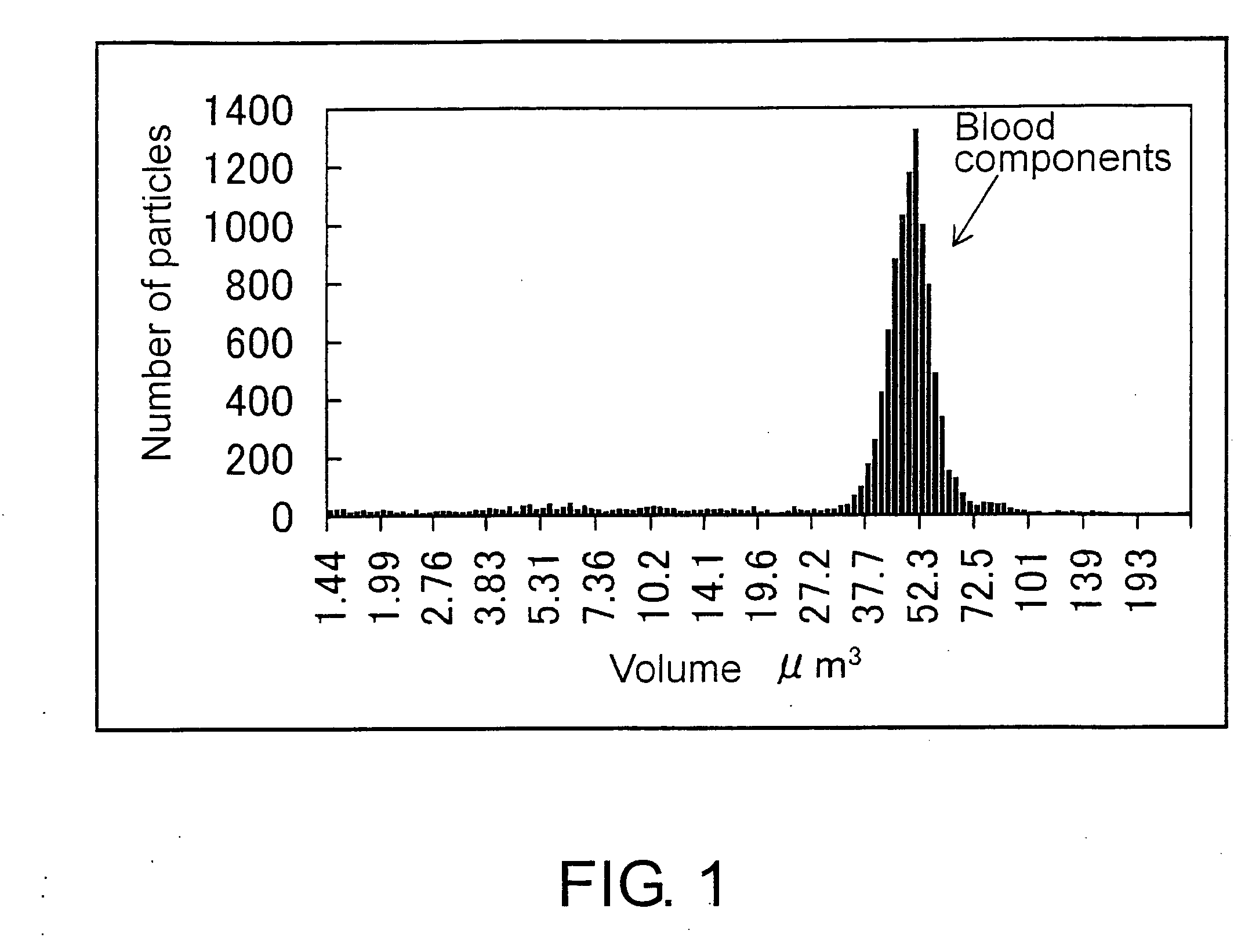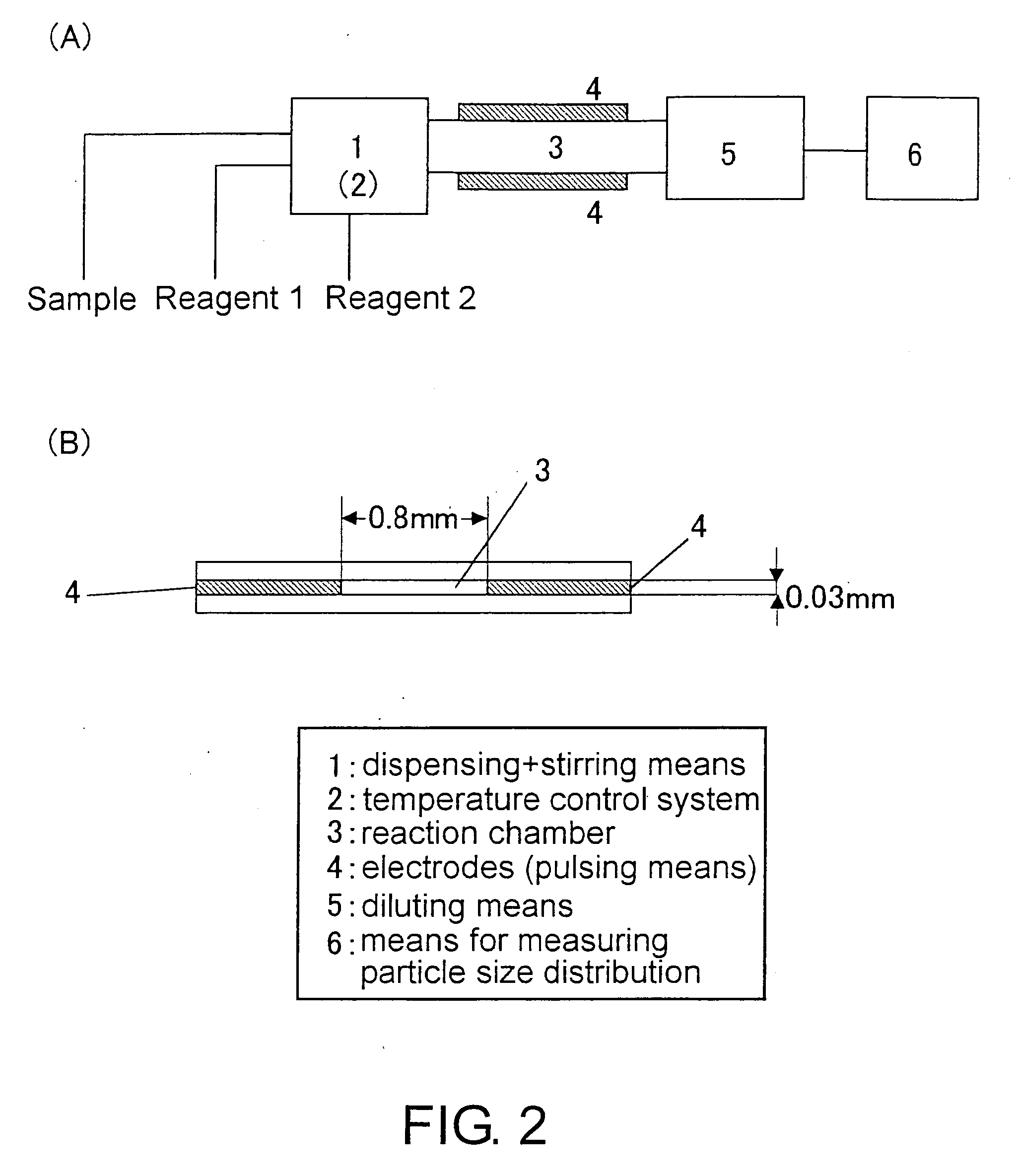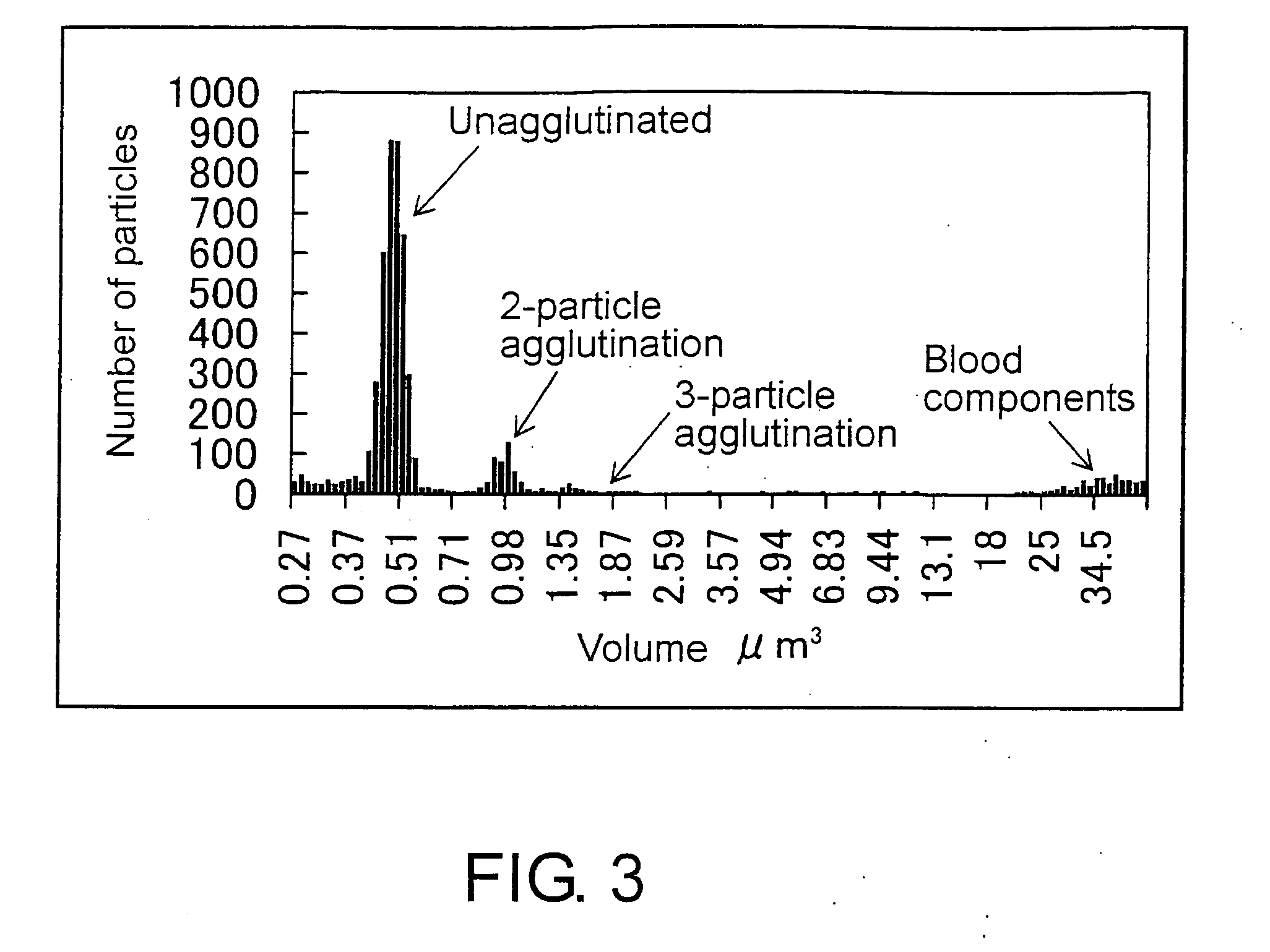Methods for Measuring Affinity Substances in Samples Containing Blood Cell Components
a blood cell component and affinity technology, applied in the field of affinity measurement methods, can solve the problems of long time, inability to meet the needs of meticulous attention to detail and technical skills, and unstable reagents used in these methods, and achieve the effects of improving the accuracy of measurement, enhancing immunological agglutination of carrier particles, and efficient immunological reactions
- Summary
- Abstract
- Description
- Claims
- Application Information
AI Technical Summary
Benefits of technology
Problems solved by technology
Method used
Image
Examples
example 1
(1) Preparation of Anti-CRP Antibody-Sensitized Latex Reagent
[0170]Glycine buffer (containing 50 mM glycine, 50 mM sodium chloride, and 0.09% sodium azide; hereinafter abbreviated as GBS) containing 0.15 mg / mL of anti-CRP antibody (manufactured by Shibayagi) was used as an antibody solution for the preparation of a latex reagent. For latex particles, 0.9 mL of GBS was added to 0.1 mL of 1.0 μm latex (manufactured by Sekisui Chemical, suspension with 10% solid content) to prepare a latex suspension.
[0171]1 mL of the antibody solution and the latex suspension were mixed and stirred at 37° C. for two hours. Then, sensitized latex was centrifuged and the supernatant was removed. The precipitates were suspended in 2 mL of glycine buffer containing 0.5% bovine serum albumin (0.5% BSA-GBS) to prepare an anti-CRP antibody-sensitized latex reagent was prepared.
(2) Measurement Apparatus
[0172]Biologically specific aggregation reactions (antigen-antibody reactions) were measured using the appar...
PUM
| Property | Measurement | Unit |
|---|---|---|
| volume | aaaaa | aaaaa |
| diameter | aaaaa | aaaaa |
| diameter | aaaaa | aaaaa |
Abstract
Description
Claims
Application Information
 Login to View More
Login to View More - R&D
- Intellectual Property
- Life Sciences
- Materials
- Tech Scout
- Unparalleled Data Quality
- Higher Quality Content
- 60% Fewer Hallucinations
Browse by: Latest US Patents, China's latest patents, Technical Efficacy Thesaurus, Application Domain, Technology Topic, Popular Technical Reports.
© 2025 PatSnap. All rights reserved.Legal|Privacy policy|Modern Slavery Act Transparency Statement|Sitemap|About US| Contact US: help@patsnap.com



